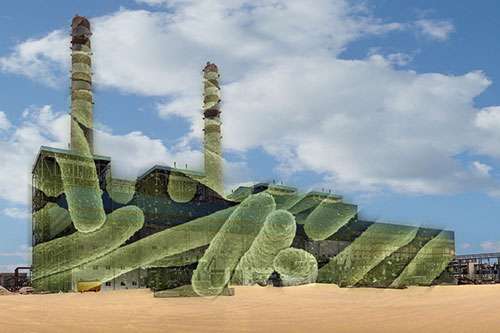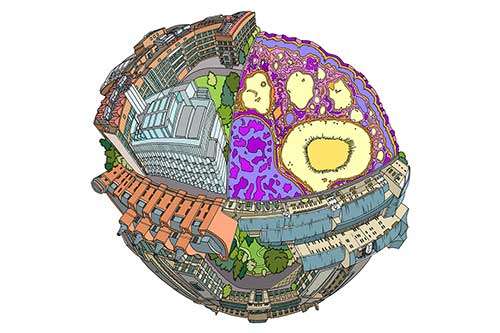How to meet demand in bacterial 'factories'

The battle over bacterial resources is coming to an end, thanks to research from the University of Bristol. The study describes a new way to model productivity in bacteria used as mini-factories to produce valuable biological components such as insulin or new man-designed proteins.
With no extra resources supplied, these bacterial 'factories' have to decide between making a new protein or making proteins for their own survival. Dr Thomas Gorochowski of BrisSynBio (a BBSRC/EPSRC-funded Synthetic Biology Research Centre at the University of Bristol) and colleagues have created a mathematical model which predicts this conflict over resources and advises protein designers how to make these micro-factories produce more efficiently.
Synthetic biology is an emerging discipline which brings together engineers and biologists to produce biological structures used in medicine and biofuels. These scientists are using natural building blocks found in cells to design new biological structures, termed synthetic proteins.
Designing these new proteins is hard enough, but taking into account the bacterial factories which have to produce them is even harder. With their resources drained by making extra proteins, the bacteria struggle to grow and function.
Dr Gorochowski said: "Bioengineering exploits the native machinery of cells to produce biological products and materials in a clean and sustainable way. However, ensuring we understand the additional burden of these demands is crucial to ensure maximum efficiency."

His new model highlights the conflict faced by bacteria producing this extra material, providing solutions to the problem and enabling more efficient production of vital synthetic proteins. Previous models are loaded with complex factors, but this new approach makes it easier for precise predictions to be made from a few easy-to-measure parameters.
Dr Gorochowski said: "Surprisingly simple rules can be used to predict how cells will respond."
His simple mathematical model will help designers of these synthetic constructs take into account the battle for resources, leading to designs which reduce the burden on bacterial factories.
More information: Thomas E. Gorochowski et al. A Minimal Model of Ribosome Allocation Dynamics Captures Trade-offs in Expression between Endogenous and Synthetic Genes, ACS Synthetic Biology (2016). DOI: 10.1021/acssynbio.6b00040
Journal information: ACS Synthetic Biology
Provided by University of Bristol


















